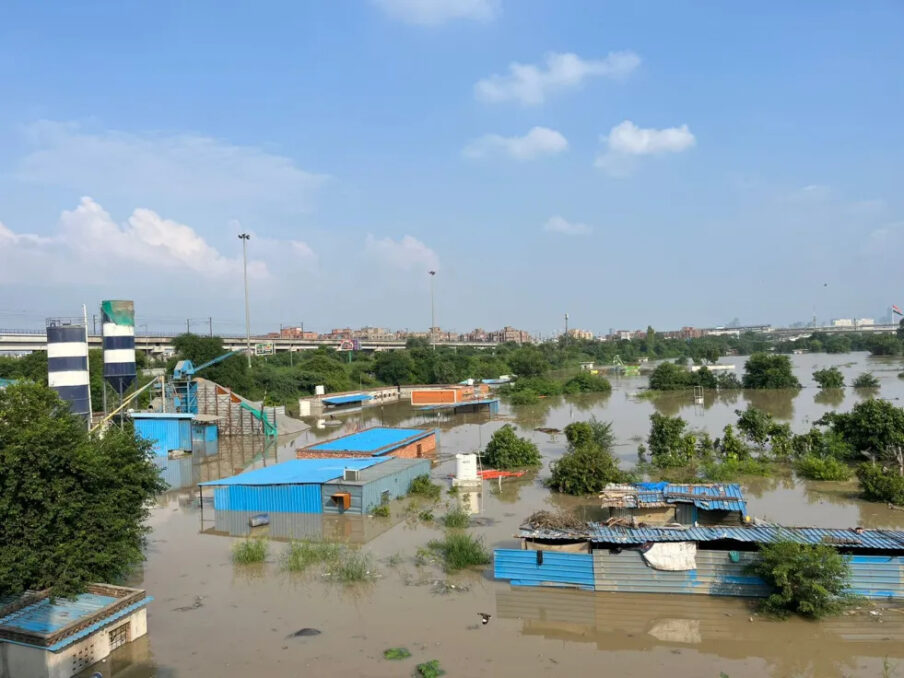Water levels in the capital exceeded the danger mark. in the Yamuna, increasing the risk of flooding for Delhi residents.
The country is experiencing chaos as a result of the monsoon season. It has hold of both Delhi and Mumbai. Delhi’s Yamuna River has begun to rise again after beginning to fall in water level. Yamuna River water level in Delhi at 7 a.m. is over the danger mark.
Ghaziabad, in the meanwhile After the flow of the Hindon River increased by 10,575 cusecs during the previous 48 hours and entered the upstream neighborhoods close to the Raj Nagar expansion, at least 1,000 people were evacuated on Friday evening. On Saturday, authorities made a statement on flooding.

Increasing the water level in the river, the irrigation department has stopped the supply of water in the western Yamuna Canal coming from the barrage to Yamuna Nagar and the East Yamuna Canal going to Uttar Pradesh, Because a large amount of stone, tree silt is washed away with water in the Yamuna River, which threatens the arrival of canals.
Earlier on 11 July, the highest 3 lakh 59 thousand cusec water was recorded on the Hathini Kund barrage.
After 13 July, Yamuna was slowly decreasing after reaching the all-time highest of 208.66 meters, but there has been a slight fluctuation in the water level in the last two-three days.
The Yamuna River water level in the national capital was recorded at 205.81 meters on Sunday morning after several days of decline, slightly above the danger mark of 205.33 meters. There, several houses in the lowlands drowned on Saturday as the Hindon River water level rose in Noida. On Saturday, police arrived on the spot and issued an alert regarding the situation.
Mudstone swept on the Jagadhari-Ponta National Highway

Bilaspur and Pratap Nagar area of Yamuna Nagar has been raining strongly since morning. Large quantities of mud and stones flowed from the mountains in Pratap Nagar and came to the Kalesar area on the Jagadhari-Ponta National Highway, causing the drivers to face a lot of trouble. The highway got jammed.
After flowing above the danger mark for eight days, the water level came down the danger mark at eight o’clock on the night of 18 July. On July 10, at five in the evening, the river crossed the danger mark, flooding the national capital. Increasing the water level of the river led to many places in Delhi struggling with waterlogging and flood-like conditions.
This is how the water level increased at the Yamuna River

At 8 pm on Friday, the water level of the Hathini Kund barrage was only 47130 cusecs. The Western Yamuna Canal and the UP each received 1810 cubic feet of water, with 17010 cusecs remaining. While there were 52969 cusecs of water at noon. At 11 p.m. on Friday, the water level in the barrage was reduced to 47198 cusecs.
The water level of the Yamuna River started rising at 3 pm. Yamuna’s water level at the barrage at 3 o’clock was 56688 cusecs, at 4 o’clock 59577 cusecs, at 5 o’clock 63405 cusecs, at 6 o’clock 73390 cusecs, at 7 o’clock 82204 cusecs, 8 o’clock, 147857 cusecs at 9 am, 10 am 209042 cusec was water. At the same time, the Som River is also flowing on the boom in the district. At 10 o’clock 10620 cusec water was flowing in Mon. This has led to waterlogging in the villages along the Som River.
Strom came again on Saturday in the Yamuna River, which had been flowing for a few days. At 11 am on Saturday, 2 lakh 23 thousand cusec water was recorded in the Yamuna River at Hathini Kund Barrage. Increasing the water level has once again brought crisis to Delhi residents. Within the following 72 hours, Delhi will receive water from the barrage.













